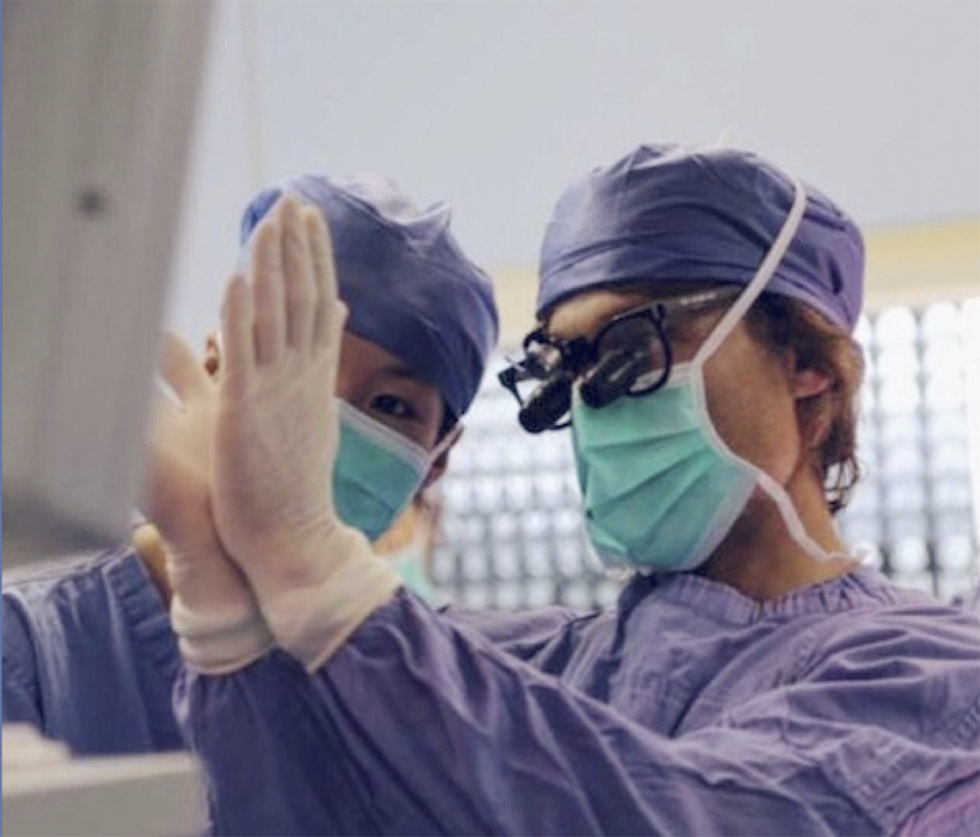Lower blepharoplasty is a great facial rejuvenation procedure. Modern surgery can be performed from inside the eyelid or from the skin. There are pros and cons to each approach. Today Dr. Massry is going to talk about the differences of filling the lower lid hollows with fat. There are 2 ways to do this.
- Fat transfer or grafting (two names for the same procedure)
- Fat repositioning
What is Fat Grafting?
Fat grafting is when fat is harvested from another part of the body (ie. abdomen) via a liposuction technique and then injected into the eyelid hollows. While this is widely used amongst aesthetic facial surgeons there is a reasonable risk of lid irregularities, such as lumps and bumps.

In the picture on the left, you can see that the patient experienced lumps and bumps after fat grafting with another surgeon. Luckily, she found Dr. Massry and he performed his cutting-edge procedure to remove the lumps and bumps through an incision inside the lower eyelid so he did not have to make any skin incisions.
What is Fat Repositioning?
Fat repositioning is when local eyelid fat (if present) is shifted (repositioned) to the adjacent eyelid hollow. The risk of irregularities is exponentially lower in this technique.

This patient underwent lower lid blepharoplasty with fat repositioning with Dr. Massry. Her results were very natural looking and she is very happy!

This is an example of a male patient underwent upper and lower blepharoplasty with fat repositioning with very natural and masculine looking results.
Be Smart About Lower Lid Blepharoplasty
Please beware of these issues with fat grafting when having your surgery done. Dr. Massry strongly urges patients to educate themselves about the procedures and to find an eyelid specialist to perform their surgery to mitigate the risks. Once the surgery is performed poorly, it is very difficult to reverse lumps and bumps from fat grafting.
Contact Dr. Massry Today!
If you are interested in learning more about fat grafting vs. fat repositioning, please contact our office today to schedule your consultation with Dr. Massry – 310.657.4302.
Read More of Dr. Massry’s Blogs


